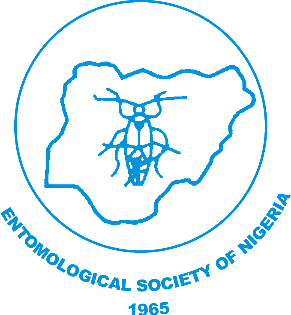
Effects of Some Plant Powders on Immatures of Corcyra cephalonica (Stainton) (Lepidoptera: Pyralidae) on Stored Cocoa Beans
NJE Vol. 40(2): 101-108, 2024
DOI.10.36108/NJE/4202/04.0280
Olorunmota, R. T.1*, Ofuya, T. I.2, Idoko, J. E.2, Adebayo, R. A.2 and Oyedokun, A.V.1
1Crop Protection Department, Cocoa Research Institute of Nigeria, Ibadan, Nigeria.
2 Department of Crop Soil and Pest Management, Federal University of Technology, Akure, Nigeria
Correspondence email:olorunmotatemilade@gmail.com ORCID: 0009-0006-3567-8526
Abstract
Rice moth, Corcyra cephalonica, an important insect pest of many stored food products has been reported as one of the most important pest of cocoa bean, which causes significant reduction in weight and quality of beans. High pesticides level in cocoa beans pose danger to human health and may hinder its acceptance in the global market due to regulations on Maximum Residue Limit (MRL). This study therefore, evaluated the insecticidal effects of the powders of Piper guineense, Aframomum melegueta, Eugenia aromatica and Rice husk on egg hatchability and larva mortality of C. cephalonica. Powder efficacies as insecticides were tested by applying varying rates (0.0, 0.1, 0.2, 0.3 and 0.4g) on petri dish lined with filter paper and the developmental stages (20 eggs and 10 larvae) of the insect were introduced in a Completely Randomized Design experiment. Egg hatchability was recorded at 24 h interval for 96 h. Larvae mortality was recorded at every 24 and 48 h of introduction. All powders completely inhibited egg hatchability at 0.3 and 0.4g rates. P. guineense and A. melegueta recorded 60% and 50% larva mortality at 48hour post treatment. Mean adult emergence was zero at higher rates in all treatments. Powders of P. guineense and A. melegueta were effective as contact bio-insecticide against C. cephalonica immature stages.
Keywords: Egg hatchability, insecticide larva and Mortality
